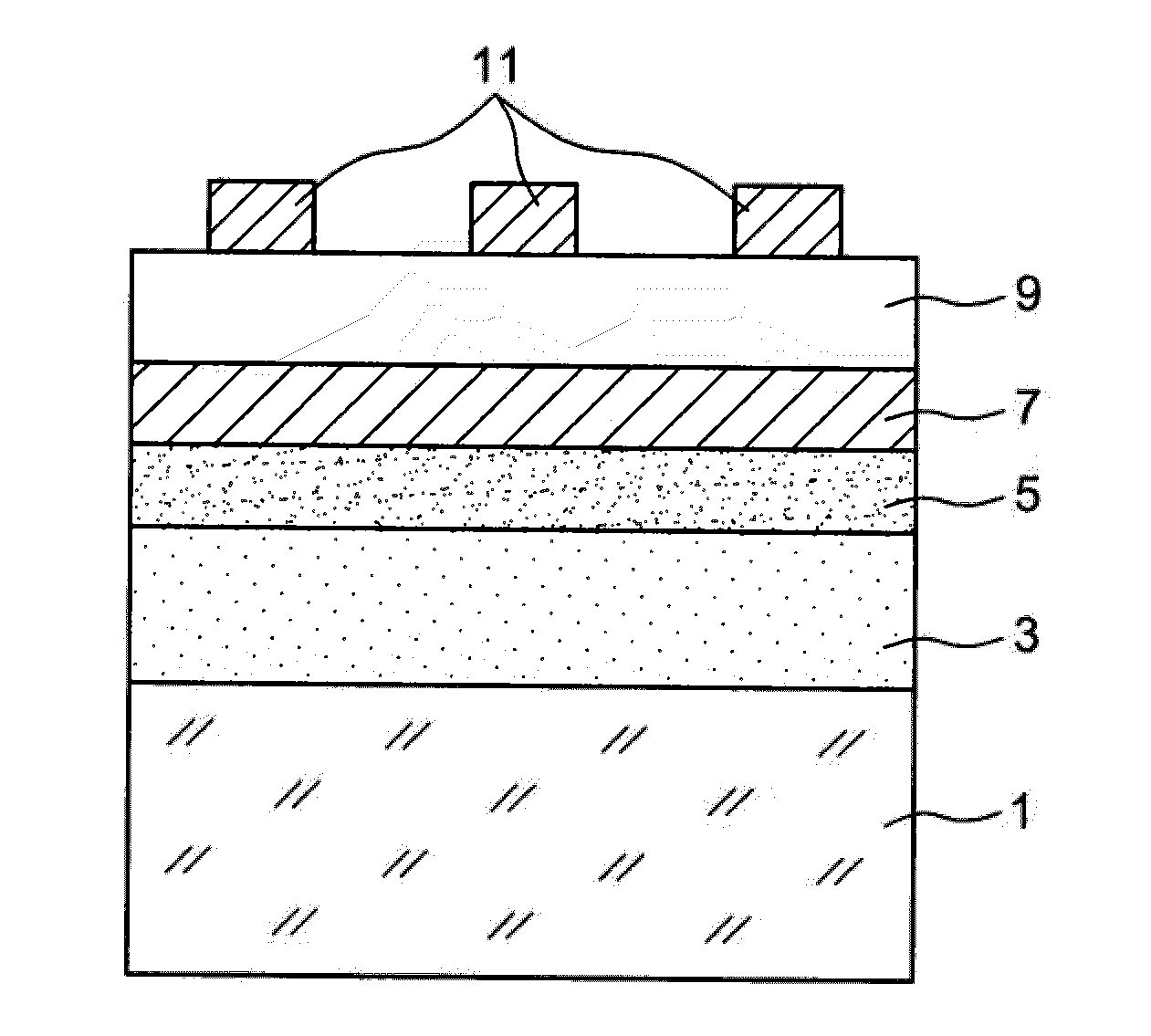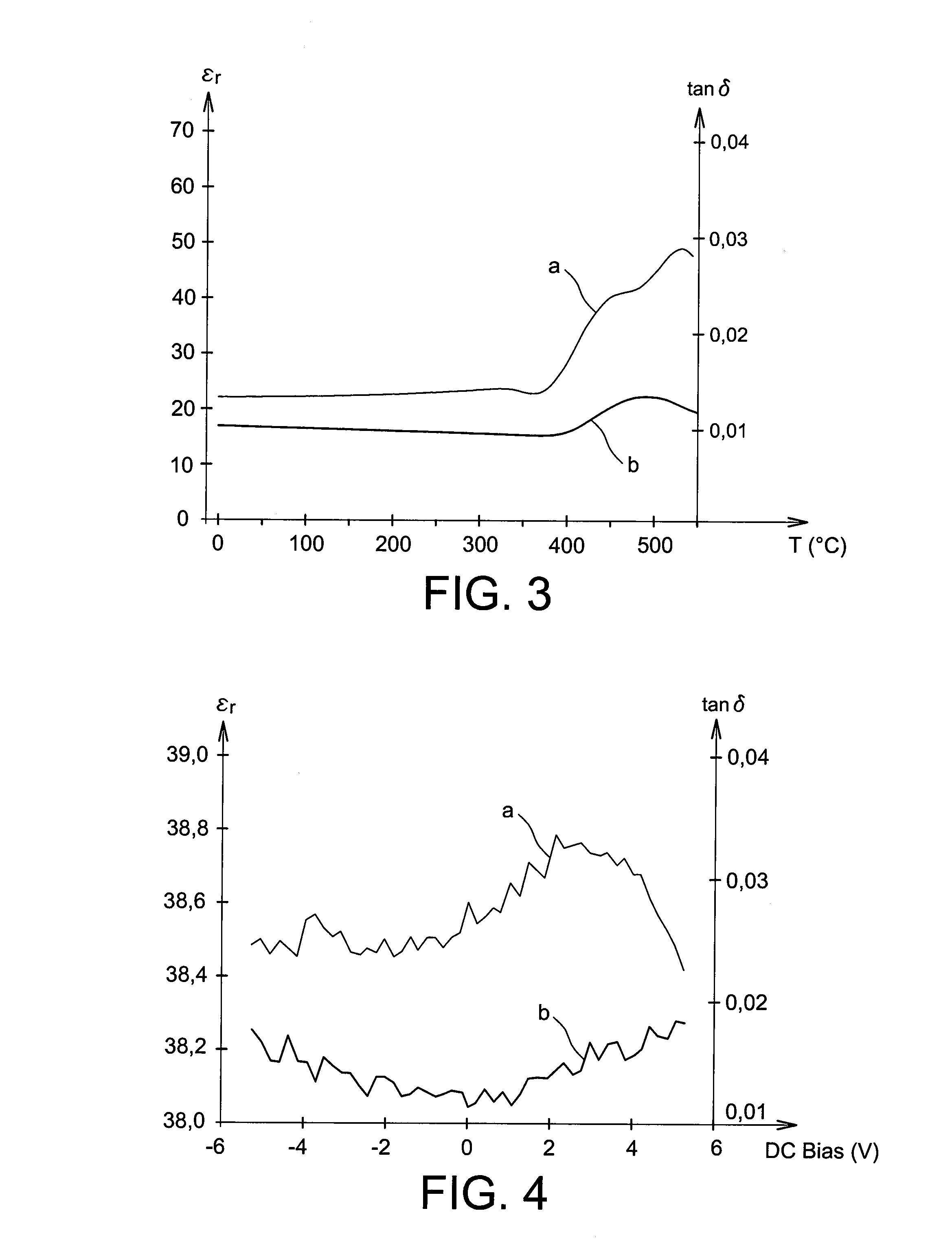Process for forming a ceramic oxide material with a pyrochlore structure having a high dielectric constant and implementation of this process for applications in microelectronics
a technology of pyrochlore structure and ceramic oxide material, which is applied in the direction of electrolytic capacitors, chemical vapor deposition coatings, ion implantation coatings, etc., can solve the problems of high dielectric loss, degrading surrounding components and interconnections, etc., and achieves high dielectric constant, low thermal dissipation factor, and advantageous dielectric properties.
- Summary
- Abstract
- Description
- Claims
- Application Information
AI Technical Summary
Benefits of technology
Problems solved by technology
Method used
Image
Examples
example
[0084]Deposited on a multilayer stack comprising, as illustrated in FIG. 1:
[0086]an SiO2 silica layer 3 about 0.5 μm in thickness;
[0087]a titanium dioxide TiO2 layer 5 about 20 nm in thickness; and
[0088]a platinum Pt layer 7 about 100 nm in thickness,
[0089]was an amorphous ceramic oxide layer 9 having the nominal composition 0.9Pb(Mg1 / 3Nb2 / 3)O3-0.1PbTiO3 9 (the sputtering target having been purchased from the supplier Super Conductor Materials, Inc., USA) with 15% excess MgO by magnetron sputtering with argon as plasma gas.
[0090]The resulting multilayer stack was then heated at various annealing temperatures, stretching from room temperature, 300, 350, 400, 450° C., 500 and 550° C., in a conventional air oven.
[0091]The ceramic oxide layer had a thickness of about 50 nm.
[0092]To determine the electrical and dielectric properties of the ceramic oxide layer deposited, circular platinum electrodes 11 with a diameter of 110 μm were deposited on the surface of said...
PUM
| Property | Measurement | Unit |
|---|---|---|
| temperature | aaaaa | aaaaa |
| temperature | aaaaa | aaaaa |
| temperature | aaaaa | aaaaa |
Abstract
Description
Claims
Application Information
 Login to View More
Login to View More - R&D
- Intellectual Property
- Life Sciences
- Materials
- Tech Scout
- Unparalleled Data Quality
- Higher Quality Content
- 60% Fewer Hallucinations
Browse by: Latest US Patents, China's latest patents, Technical Efficacy Thesaurus, Application Domain, Technology Topic, Popular Technical Reports.
© 2025 PatSnap. All rights reserved.Legal|Privacy policy|Modern Slavery Act Transparency Statement|Sitemap|About US| Contact US: help@patsnap.com



